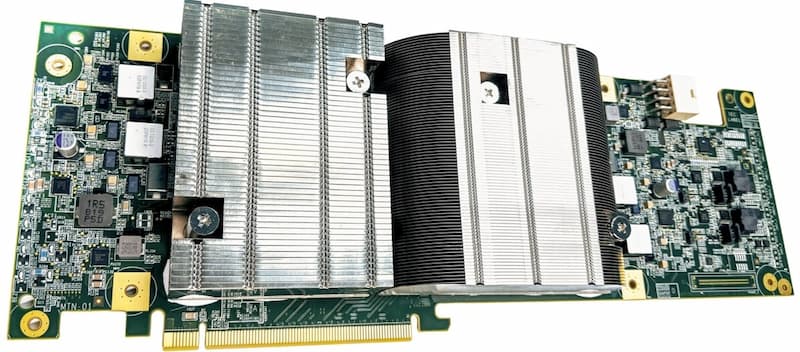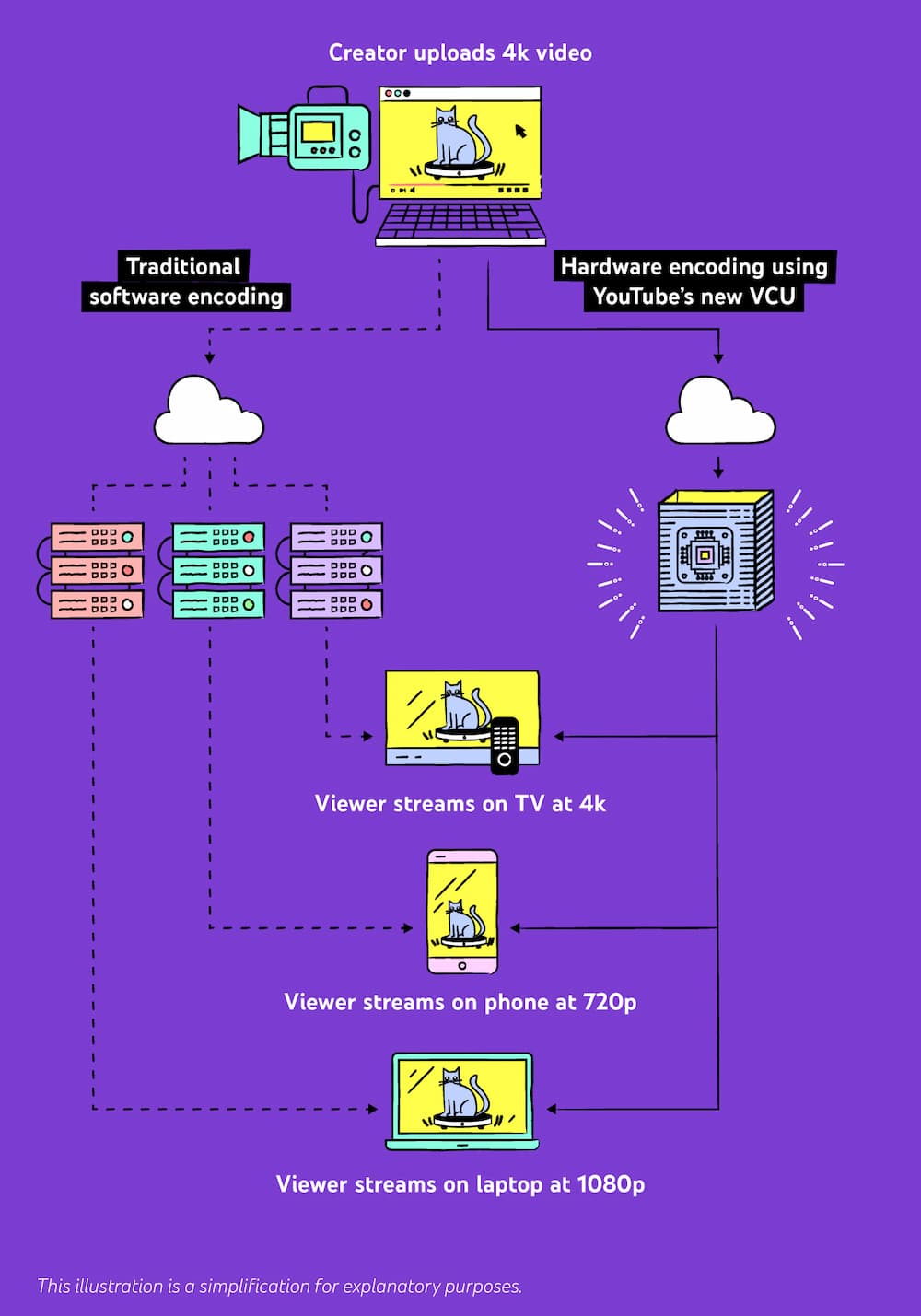Google’s subsidiary, Youtube, has seen the demand on its resources explode during the pandemic like most streaming players. For a while, the inflation of the need for computing power for video encoding was a topic within Google. The company therefore decided to create its own solutions called Argos.
There were GPUs, but now we’ll have to get used to hearing about VCUs. YouTube’s technical team claims to have created a ” VCU ” or ” Video (trans) encoding unit “. This hardware solution helps YouTube to transcode a single video in addition to one of the dozens of versions it needs to optimize bandwidth and quality of service depending on the targeted end user (PC, TV, telephone…).
This VCU is a full-length PCI-Express card and looks a lot like a graphics card, except that it includes two ASIC chips hidden under a huge aluminum heat sink requiring an 8-pin PCI-Express connector for power.
According to Google software engineer Jeff Calow, the company’s new Argos chip offers ” improvements of up to 20 to 33 times in computing efficiency over our previous optimized system, which ran software on traditional servers . ” (Intel Skylake processors + Nvidia Tesla T4 GPU).
The main advantage of this chip is that it has ten cores dedicated to encoding. Each of the cores is capable of encoding at a resolution of 2160p in 60 FPS, in real time using three reference frames. The diagram above shows the interest of this new hardware in Google’s infrastructure but also the comfort gains for the end user.
The post Google would have created its own video card appeared first on HardwareHeaven.com.


